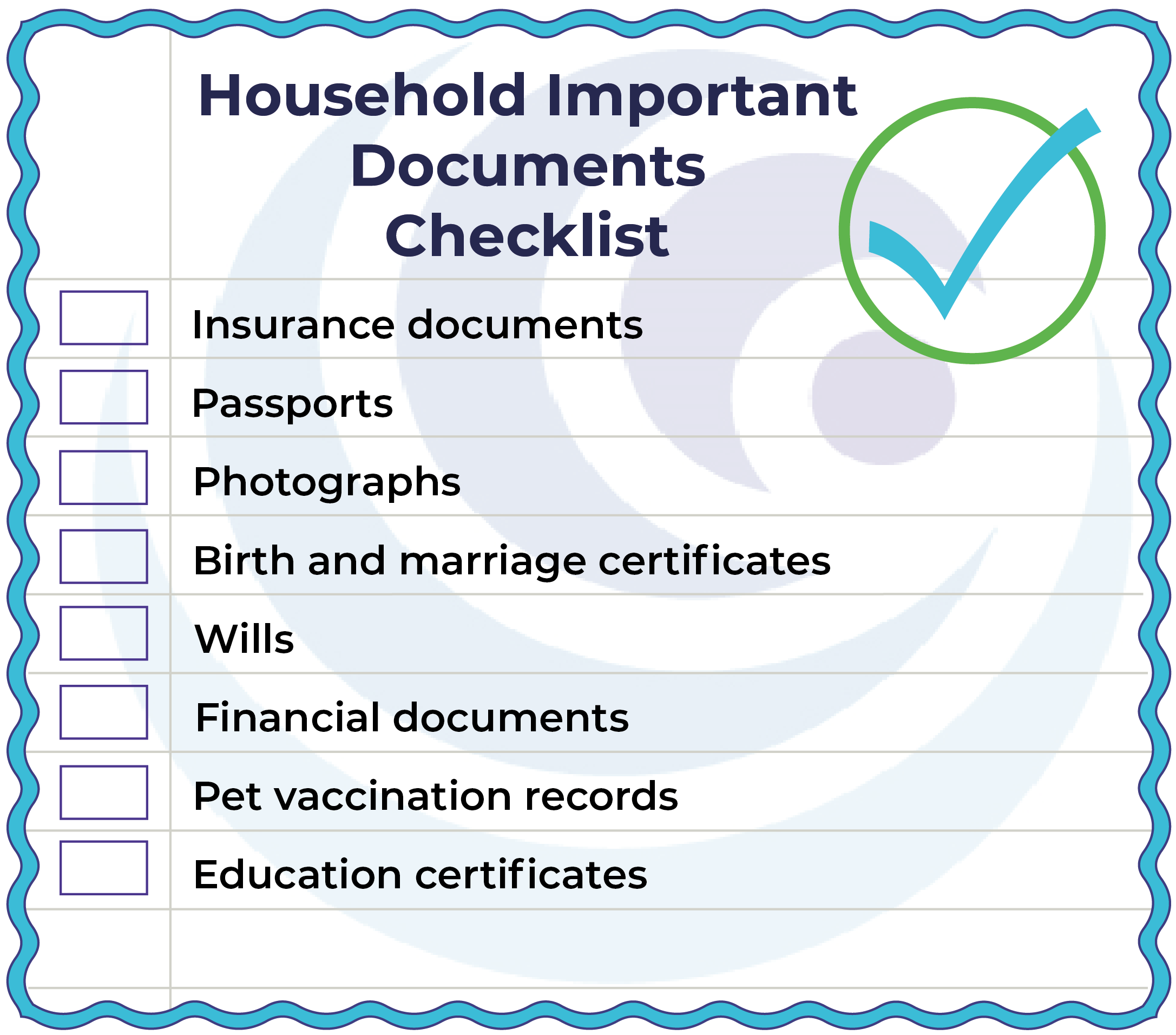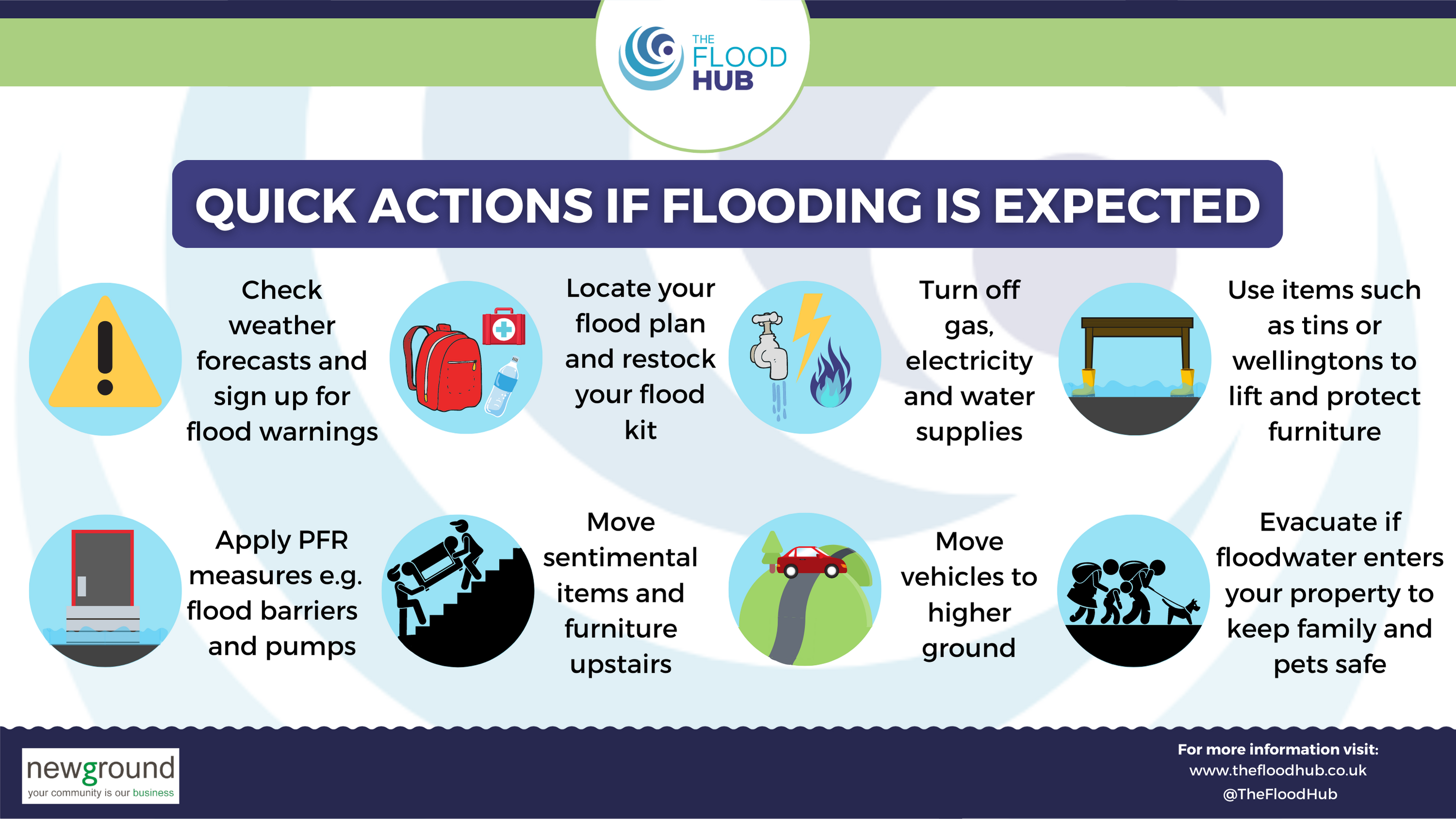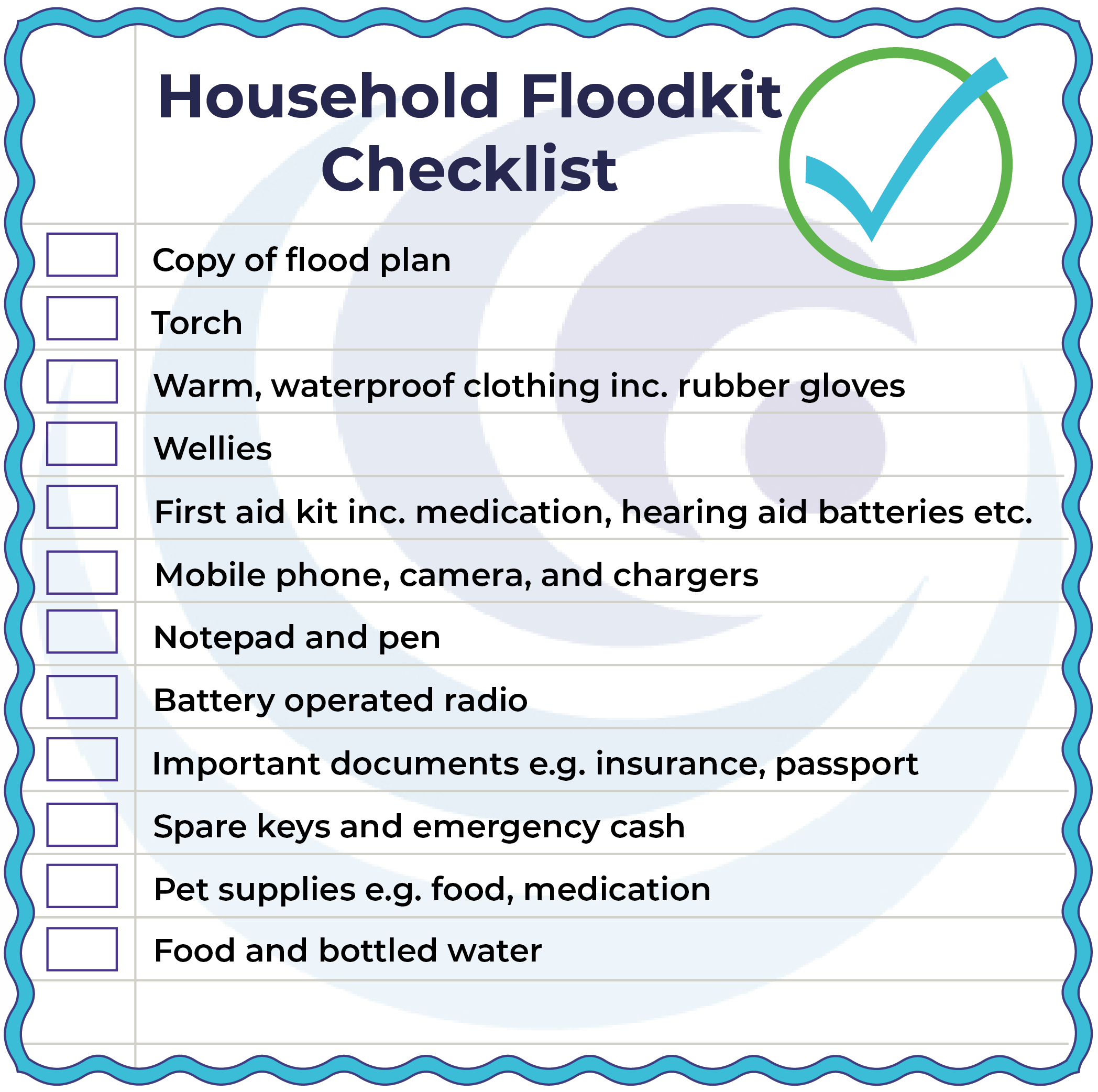Many households in the UK are at risk of flooding. By planning, preparing and making your property more resilient, you can aim to reduce the impact of flooding. From creating a flood plan to dealing with insurance, there are many resources available to help you prepare for a flood and ease the recovery process that follows.
Planning ahead for flooding will ensure that you can respond to the incident in the most efficient and effective way. You can do this by creating a basic plan of action, checking that your insurance covers flooding, registering for Met Office Severe Weather Warnings, signing up to receive flood alerts and warnings (alternative warnings are available if you aren’t eligible) and understanding who’s responsible for managing flood risk. Download our ‘How to reduce the impact of flooding’ resource here for more information on how to become more prepared and more resilient to the potential impacts a flood can have.
When buying or moving into a house, you should always consider the flood risk to the area and to the property. If you are unsure whether the property is located in a flood risk area, you can check the property’s long term risk of flooding using this map.
You can also download our ‘Purchasing Property and Flood Risk’ resource here which suggest things that you can do yourself to become more aware of a property’s potential flood risk.
If you live in a an area at risk of flooding, it’s a good idea to make a flood plan, even if it has never happened before. It ensures that when receiving a flood alert or warning you know what actions to take, you can deploy any temporary property flood resilience measures efficiently and you are best prepared to protect your property and belongings from the impacts of flooding.
The information on this page explains how to create your household plan. Click here to download the household flood planning guide which contains all of this information.
You can download a printable version of a flood plan here. The document contains a pre-populated flood plan and a blank flood plan which you can complete and keep in a suitable, easy to find place in case a friend, relative or neighbour may need to find it in your absence.

Create a checklist to make sure you have taken all the measures you can to plan and prepare for potential flooding in the future. You can tailor the checklist to suit the specific needs of your household, and it can include points such as:

Keep important documents in waterproof storage or saved on a memory stick and stored upstairs, for example insurance documents and passports.

As part of your flood plan it is a good idea to sign up for free flood alerts and warnings from the Environment Agency. This service can deliver flood alerts and warnings to multiple household members via call, text, or email. It is important to understand what the different warnings mean as you can use them as a trigger to put your plan into action at the right time. Flood warnings and alerts are not available in all areas, however you can consider alternative flood warnings.
Flood Alert – Flooding to low lying land and roads is possible. Stay vigilant and make early preparations for a potential flood. Prepare to act on your flood plan.
Actions to consider at a flood alert stage:
Flood Warning – Flooding is expected. Immediate action is required to protect yourself and your property. Put your flood plan into action.
Actions to consider at a flood warning stage:
Severe Flood Warning – Severe flooding is expected. Significant risk to life and property. Prepare to evacuate and cooperate with emergency services. Evacuate.
At severe flood warning stage:
For more ideas on what you can add to your step-by-step plan of action, download our Household Flood Planning Guide here.
As part of your flood plan it is a good idea to use the ‘Check For Flooding’ Service that is provided by the Environment Agency. It allows users to input their postcode and find out the current flood warnings or alerts, the river, sea, groundwater and rainfall levels and the flood risk over the next 5 days. The page is regularly updated and provides information on the risk of flooding from rivers, the sea and groundwater only. There’s also information on how to sign up for flood warnings and how to find out your risk of flooding from surface water.
A plan of what to do if you need to evacuate should be included in your flood plan. You should follow local news or contact your local council to find the nearest emergency assistance centre. You can prepare a flood kit containing essential items you would need if you have to leave your house. For information on what items you could put in your flood kit, go to the ‘Flood Kits’ section which is in the left hand side menu of this page.
Visit the Blue Cross for pets page here for more advice on how to protect your pets during flooding.
Click here to visit the RSPCA page for more advice about how to keep animals safe during floods.
It is important that your flood plan is reviewed regularly to ensure that contact details are up to date. You should create a maintenance schedule to check that property flood resilience measures still function correctly, and practice installing them periodically.
It is good practice to fully test your flood plan once finished, and run a ‘flood drill’ so everyone in the house knows what to do and what to expect if you ever have to put your plan into place.
If flooding is expected and there is very little time to plan and prepare for a flood, you can consider carrying out the following:

A flood kit should contain items that are essential to you. Preparing one in advance will save time in the event of a flood, however some items such as medication and mobile phones may have to be gathered later when a flood warning is issued. A flood kit should be packed into a sturdy bag, such as a rucksack and stored in an easy to find place. Here are some suggestions of what to put in your flood kit:

Some items are more essential than others, but depending on how much you can fit in your flood kit you may be able to take extra useful items such as; wellies, camera, notepad & pen, battery operated radio, pet food & other supplies and toys to keep children occupied.
Make sure that items in the flood kit are regularly replaced if needed e.g. prescription medication
Priority Service registers and Extra Care Registers are used by United Utilities and Electricity North West to help those across the North West who may need extra support due to issues such as age, ill health, mental health problems, language barriers or financial worries.
The services are free of charge and provide extra assistance during a power cut or when there is a disruption to water supplies.
You can register for the United Utilities Priority Services online by clicking here. Or alternatively, you can call them any time on 0345 072 6093. You don’t have to be the named bill payer to benefit from Priority Services. For more information on United Utilities Priority service, click here.
Registering for the Electricity North West Extra Care Register involves filling in a form online which can be done by clicking here.